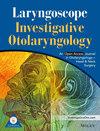Impact of Anti-Fatigue Floor Mat on Surgical Staff Comfort Levels in Head and Neck Surgery Cases
Abstract
Objective
Musculoskeletal symptoms are common among surgical staff and can have long-term implications on health and wellbeing. The purpose of this study is to evaluate the impact of anti-fatigue floor mat on the comfort level of surgical teams during head and neck surgeries lasting ≥ 3 h.
Methods
Over 4 months, we prospectively randomized 34 major (≥ 3 h) head and neck procedures to the use or not of an anti-fatigue floor mat. Anonymous questionnaires measured the comfort levels in different subjects including the surgeons, assistant surgeons, and surgical scrub technicians (n = 57). Subjects completed questionnaires before, immediately after, and one day after surgery. Variables collected included demographics, overall discomfort level, overall energy level, discomfort level in different body parts, number of breaks taken during the case, time since last physical exercise, and frequency of physical exercise. The analysis of variance (ANOVA) technique was used for data analysis.
Results
The group that used anti-fatigue floor mats reported lower increases in discomfort from pre-op to immediately post-op and 24 h post-op compared to the group that did not (p = 0.009 and p < 0.001). Participants who used the mats reported significant lower levels of pain in the ankles and feet, knees, and shoulders immediately post-op compared to participants who did not. Participants who used the mats reported lower increases in discomfort in their back, hips, knees, neck, and shoulders from pre-op to post-op.
Conclusions
Using anti-fatigue floor mats during surgery is an effective and low-cost intervention to decrease the musculoskeletal symptoms experienced by the surgical team.
Level of Evidence
2.


 求助内容:
求助内容: 应助结果提醒方式:
应助结果提醒方式:


